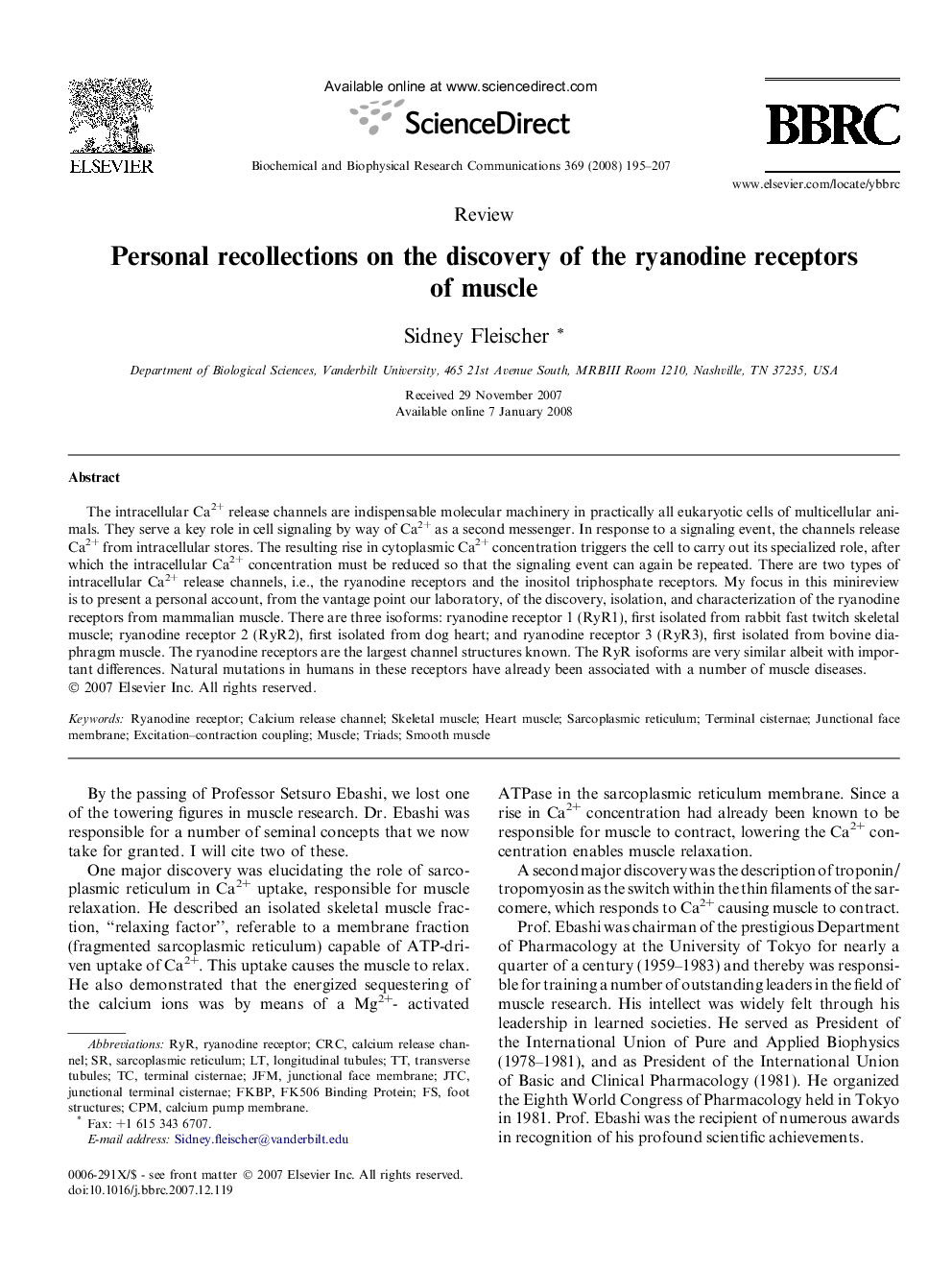| Article ID | Journal | Published Year | Pages | File Type |
|---|---|---|---|---|
| 10766840 | Biochemical and Biophysical Research Communications | 2008 | 13 Pages |
Abstract
The intracellular Ca2+ release channels are indispensable molecular machinery in practically all eukaryotic cells of multicellular animals. They serve a key role in cell signaling by way of Ca2+ as a second messenger. In response to a signaling event, the channels release Ca2+ from intracellular stores. The resulting rise in cytoplasmic Ca2+ concentration triggers the cell to carry out its specialized role, after which the intracellular Ca2+ concentration must be reduced so that the signaling event can again be repeated. There are two types of intracellular Ca2+ release channels, i.e., the ryanodine receptors and the inositol triphosphate receptors. My focus in this minireview is to present a personal account, from the vantage point our laboratory, of the discovery, isolation, and characterization of the ryanodine receptors from mammalian muscle. There are three isoforms: ryanodine receptor 1 (RyR1), first isolated from rabbit fast twitch skeletal muscle; ryanodine receptor 2 (RyR2), first isolated from dog heart; and ryanodine receptor 3 (RyR3), first isolated from bovine diaphragm muscle. The ryanodine receptors are the largest channel structures known. The RyR isoforms are very similar albeit with important differences. Natural mutations in humans in these receptors have already been associated with a number of muscle diseases.
Keywords
Related Topics
Life Sciences
Biochemistry, Genetics and Molecular Biology
Biochemistry
Authors
Sidney Fleischer,
